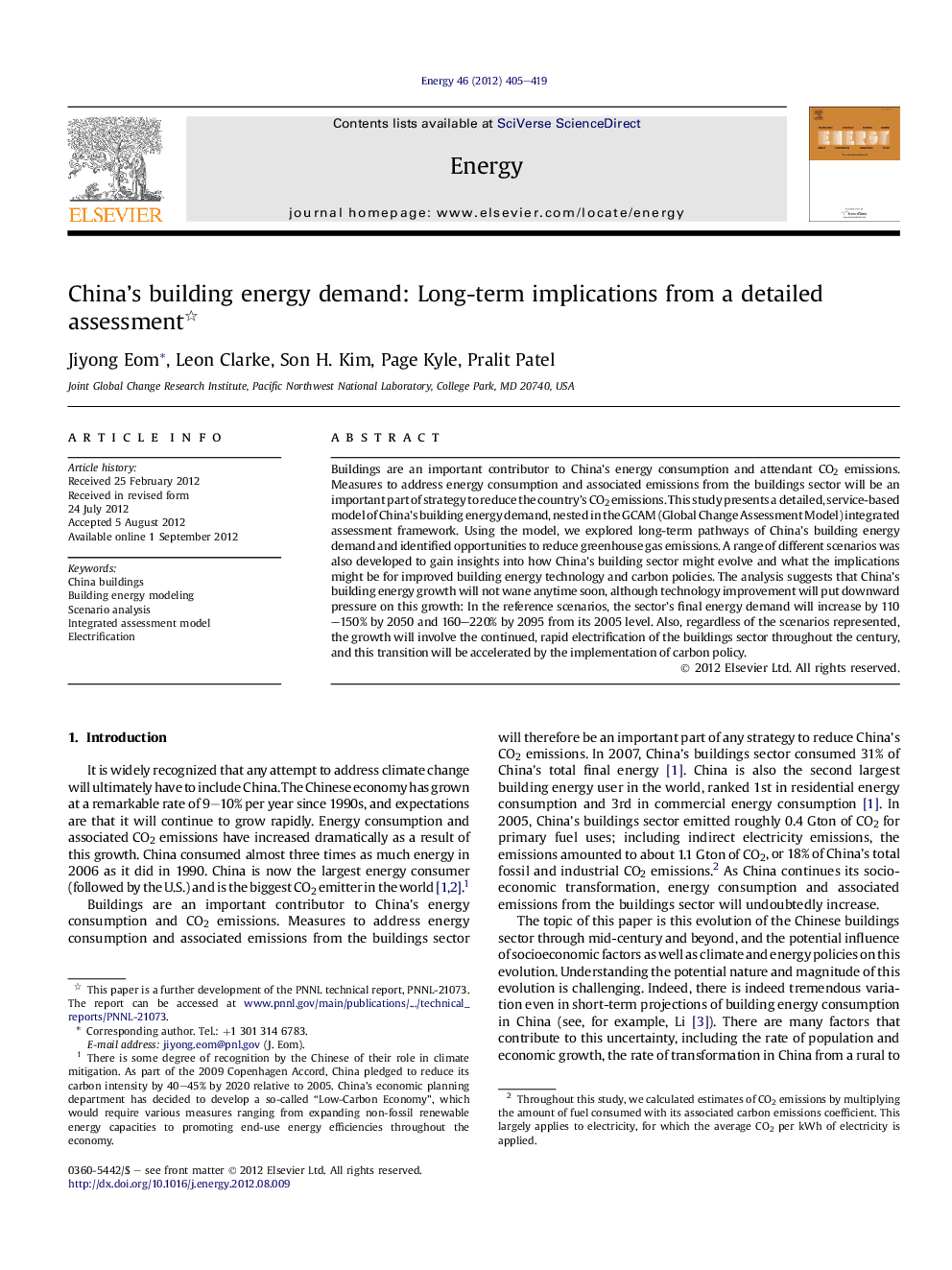| Article ID | Journal | Published Year | Pages | File Type |
|---|---|---|---|---|
| 1733434 | Energy | 2012 | 15 Pages |
Buildings are an important contributor to China's energy consumption and attendant CO2 emissions. Measures to address energy consumption and associated emissions from the buildings sector will be an important part of strategy to reduce the country's CO2 emissions. This study presents a detailed, service-based model of China's building energy demand, nested in the GCAM (Global Change Assessment Model) integrated assessment framework. Using the model, we explored long-term pathways of China's building energy demand and identified opportunities to reduce greenhouse gas emissions. A range of different scenarios was also developed to gain insights into how China's building sector might evolve and what the implications might be for improved building energy technology and carbon policies. The analysis suggests that China's building energy growth will not wane anytime soon, although technology improvement will put downward pressure on this growth: In the reference scenarios, the sector's final energy demand will increase by 110–150% by 2050 and 160–220% by 2095 from its 2005 level. Also, regardless of the scenarios represented, the growth will involve the continued, rapid electrification of the buildings sector throughout the century, and this transition will be accelerated by the implementation of carbon policy.
► We developed a building energy model for China, nested in an integrated-assessment framework. ► We explore long-term pathways of China's building energy use by implementing a range of scenarios. ► China's building energy consumption will continue to grow and be electrified over the century. ► Improved building energy technology will slow down the growth in building energy consumption. ► Electrification will be accelerated by the implementation of carbon policy.
